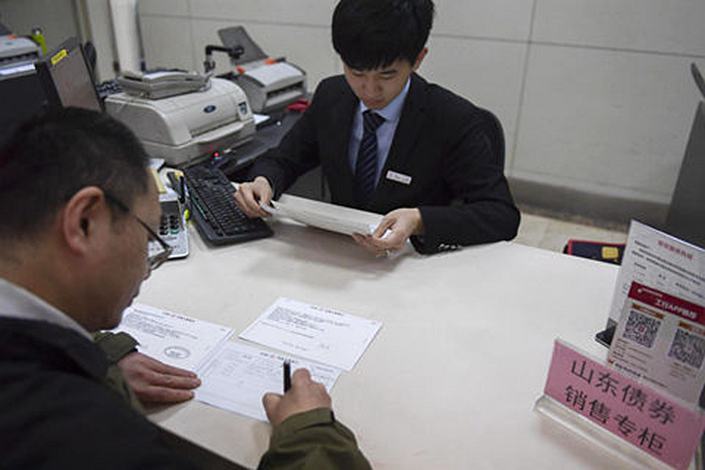China Moves to Unify Fragmented $15.4 Trillion Bond Market

Chinese regulators are moving to unify the country’s fragmented interbank and exchange bond markets. China’s bond market is the world’s second largest, worth some $15.4 trillion, but each part operates independently, overseen by two different regulators.
The People’s Bank of China (PBOC) and the China Securities Regulatory Commission (CSRC) said in a joint statement (link in Chinese) on Sunday that qualified investors on the interbank market and on the Shanghai and Shenzhen exchanges will be able to buy and sell bonds listed on both markets through a “connect” mechanism.
The interbank bond market is regulated by the PBOC, while the exchange bond market is supervised by the CSRC.
“This can be seen as a construction notice (of the connect mechanism),” a source at the PBOC said. The source added that connecting the bond market infrastructure can help unify prices. In practice, the connect will link together market infrastructure including the transaction “front desks” of the interbank market’s National Interbank Funding Center and the Shanghai and Shenzhen exchanges, as well as settlement “back offices” of the interbank market’s China Central Depository and Clearing Co. Ltd. and Shanghai Clearing House, and the exchange market’s China Securities Depository and Clearing Corp. Ltd.
The move is considered significant as a bid to boost liquidity and a step towards financial opening-up. “It’s noteworthy that the convenience of the facility can be fully enjoyed by overseas investment institutions, which will enhance the attractiveness of China’s bond market for overseas investors and further promote internationalization of the yuan,” analysts of Everbright Securities Co. Ltd. wrote in a Sunday research note (link in Chinese).
At the end of June, the outstanding value of China’s bond market reached about 107.8 trillion yuan ($15.4 trillion), tripling from the beginning of 2015, according to data (link in Chinese) from the central bank. Set up in 1997, the interbank bond market makes up the bulk of the bond market overall.
The interbank bond market saw turnover of about 23.5 trillion yuan in June, up 36.5% year-on-year, in comparison with 1.4 trillion yuan for the exchange bond market, representing 105.9% year-on-year growth, according to central bank data (link in Chinese).
The two markets have slightly different sets of criteria for investors. The final requirements for determining investors’ eligibility to use the connect mechanism may take the “overlapping” part, the PBOC source said.
The connect mechanism focuses on spot transactions and does not include bond repurchases or derivatives, the source said. The exchanges will only include bonds traded through a non-bid process in the mechanism, which usually account for over 80% of all spot bond transactions at the bourses, the source said.
The Shanghai and the Shenzhen stock exchanges were established in 1990, followed by the setup of the exchange bond market, which became the main venue for banks and other financial institutions to trade bonds. However, the central bank in 1997 ousted commercial banks from the exchange bond market after too much bank funds flowed into the stock market through bond trading, and the interbank bond market was formed in the same year. Most banks later were allowed to trade again on the exchange bond market.
The two bond markets have long been separated, operating their own bond issuance, listing and trading. Since 2015, the interministry coordination mechanism for corporate bonds — launched in 2012 by the PBOC, the CSRC and the National Development Reform Commission — has powered the government’s effort to unify bond market rules in terms of access, law enforcement, information disclosure, ratings, defaults and legal systems.
This story has been updated with additional information.
Contact reporter Timmy Shen (hongmingshen@caixin.com) and editor Gavin Cross (gavincross@caixin.com)
Caixin Global has launched Caixin CEIC Mobile, the mobile-only version of its world-class macroeconomic data platform.
If you’re using the Caixin app, please click here. If you haven’t downloaded the app, please click here.

- GALLERY
- PODCAST
- MOST POPULAR




